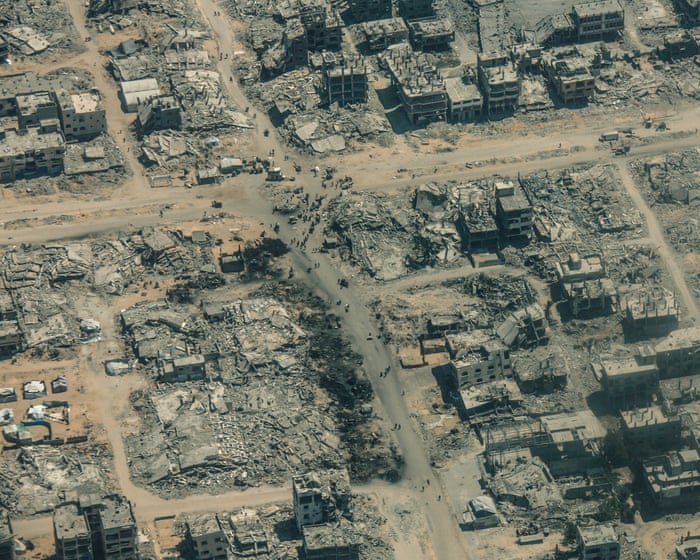The weather was unpleasant—drizzly and cold. Yet around 1,000 people braved the conditions on Mount Everest’s eastern slopes to spend China’s National Day holiday trekking.
As 32-year-old guide Shu Wei led the group along a path surrounded by breathtaking icy peaks, he grew increasingly concerned. He knew mountain weather could be unpredictable and hazardous, but this snowfall was different.
“By about 8 p.m., the snow was already up to our knees,” he recalls. “And it continued snowing all night long.”
A few days into their journey, a deadly storm developed overhead, battering Tibet and Nepal with heavy rain and snow. It left over 1,000 hikers, mostly Chinese, stranded for days, prompting a large-scale rescue operation.
After dinner, the group huddled in their tents, remembers 35-year-old trekker Wu Bin. Even as they tried to clear it, the snow kept accumulating.
“It piled up higher and higher, almost reaching my tent windows,” he says. “That’s when I realized the situation was becoming serious.”
Guides moved everyone into the dining tent, where they lit fires to stay warm and discussed their next steps. Shu explained they might be stuck for a few days, but if the weather improved, they would descend in the morning.
“Hearing we might be trapped made me quite anxious,” Wu admits. “I thought if it was only a day or two, I could handle it, but any longer and the uncertainty would be really stressful.”
After a sleepless night, they decided to leave in the morning, beginning a descent that lasted all day. At first, they were alone, but soon other groups joined them in the escape. A line of trekkers moved slowly through the knee-deep snow in the thin mountain air.
“After walking about two kilometers, yaks were brought in to clear a path for us,” says Shu, an experienced guide who had worked for years on the western Sichuan Plateau. “That sped things up and helped us get off the mountain sooner.”
“Along the way, we met many local villagers assisting with the rescue. They gave us supplies, hot water, and food and drinks. When we finally reached the exit, there were even instant noodles waiting for us.”
Mountaineering media reported that weather forecasts had been available, noting that climbing groups on nearby peaks had turned back days earlier. Local tourism authorities had also closed ticket sales and roads for the weekend. On Chinese social media, some questioned whether treks were allowed to proceed to capitalize on holiday business.
Coverage of the incident in Chinese media was limited during the rescue. State media, which is tightly controlled, often restricts reporting on negative events, especially before they are resolved. Information is even scarcer in Tibet, where the rescues took place, due to stricter government controls.
By Tuesday, nearly 900 people—including 580 trekkers and 300 yak herders and local guides—had been evacuated from the park. Most made their way or were assisted to the nearby village of Qudang. The storm also trapped 251 people in Qinghai, north of Tibet, where one Taiwanese trekker died of hypothermia and acute mountain sickness, according to state media.
In Xinjiang, authorities persuaded 300 hikers to turn back, and one person was hospitalized. Nepalese authorities reported no one trapped on their side of the mountain.
Additional reporting by Lillian Yang.
Frequently Asked Questions
Of course Here is a list of helpful and concise FAQs about being stranded on Everest
General Beginner Questions
Q What does it actually mean to be stranded on Mount Everest
A It means you are stuck and unable to move up or down the mountain usually due to extreme weather injury exhaustion or a lack of supplies
Q How do people stay warm in the endless snow
A They rely on hightech insulated down suits layered clothing heated boot insoles and by staying in a tent sheltered from the wind
Q What are these instant meals people eat up there
A They are freezedried or dehydrated meals in packets You just add hot water to rehydrate them Common examples are pasta stews and oatmeal
Q Are yaks friendly or dangerous
A Generally they are calm and used to people but they are large powerful animals Its important to give them plenty of space and not startle them especially on narrow trails
Practical Survival Questions
Q How do you melt snow for drinking water
A You use a portable stove to melt snow in a pot Its crucial to never eat unmelted snow as it lowers your body temperature and dehydrates you
Q Whats the biggest challenge with the instant meals
A The main issue is that at high altitudes your sense of taste diminishes so the food can seem bland Also without a working stove or fuel you cant prepare them at all
Q What should you do if you encounter a yak on a narrow path
A The golden rule is to always move to the uphill side of the trail and let the yak pass They have the right of way and are carrying heavy loads
Q How long can someone survive if stranded
A It depends on the weather supplies and health but without shelter in the Death Zone survival is measured in hours due to lack of oxygen and extreme cold
Advanced ScenarioBased Questions
Q Why is it so difficult for rescue teams to save stranded climbers
A The extreme altitude thin air and violent weather make helicopter rescues nearly impossible high on the mountain Rescue efforts are incredibly dangerous for the Sherpas and other




